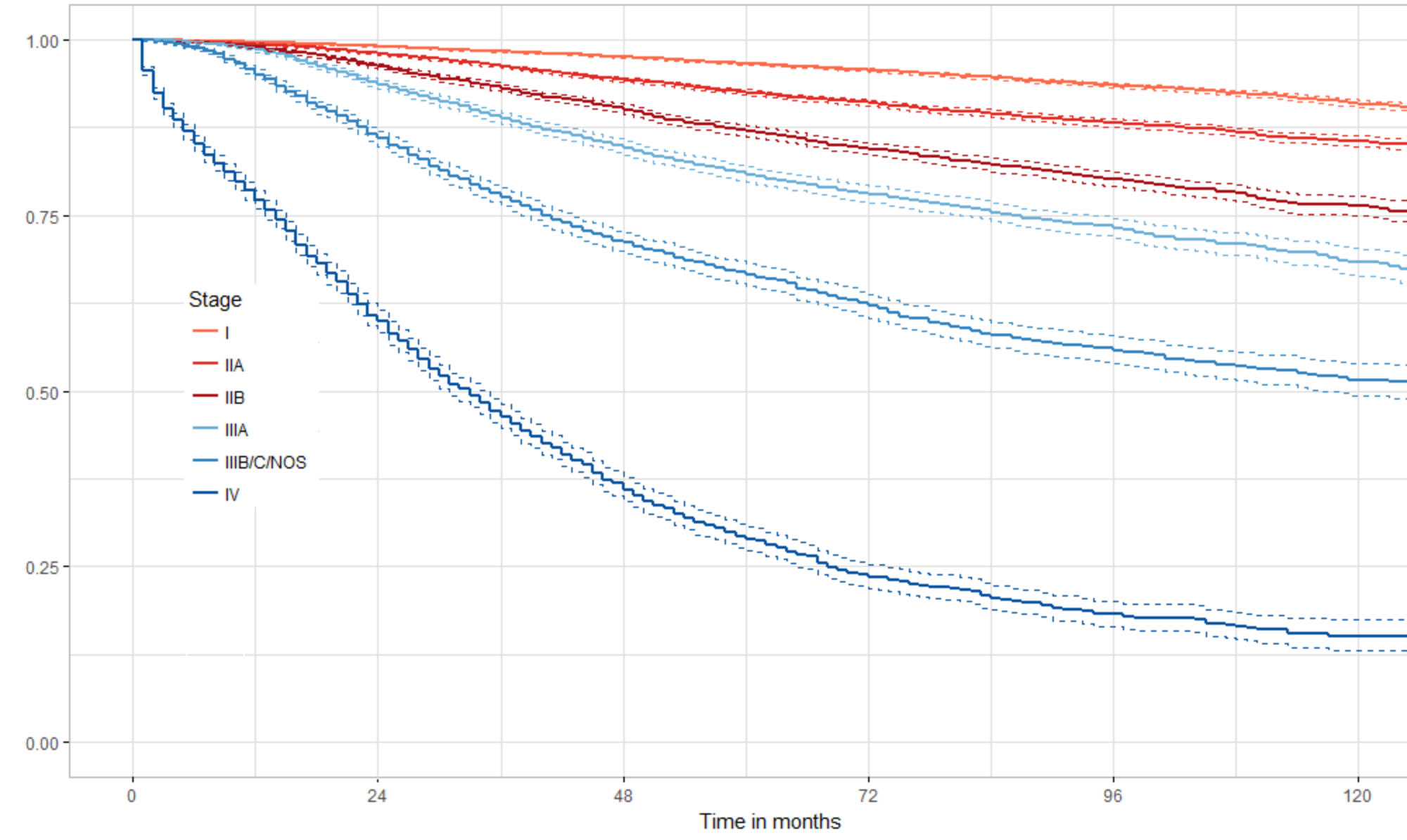The latest issue of the Journal of Insurance Medicine posted today. It contains 2 articles that I authored, one as a contributor along with a great group of friends and colleagues on MIB’s Mortality Research and Analysis Committee (about breast cancer mortality), and another as the lone author about the Random Forest algorithm for survival data.
I’ll spoil the conclusion on that last one – when I used a Cox model and a RSF model on colon cancer survival data from SEER, they had very similar concordance error rates, which is kind of a vote for Cox in that circumstance since the hazard ratio output offers a readier quantification of the relative importance of the predictors.
I got the idea to do this while taking courses in the Coursera Data Analysis Signature track. We had to do a project with our own data and create a Shiny app to go with it. (A Shiny app is an interactive web page that can be created using R and R-studio). I chose to create a colon cancer survival calculator based on SEER data and using a Random Forest approach. You can try out my app here, but be patient, it takes a while to load the first time.

